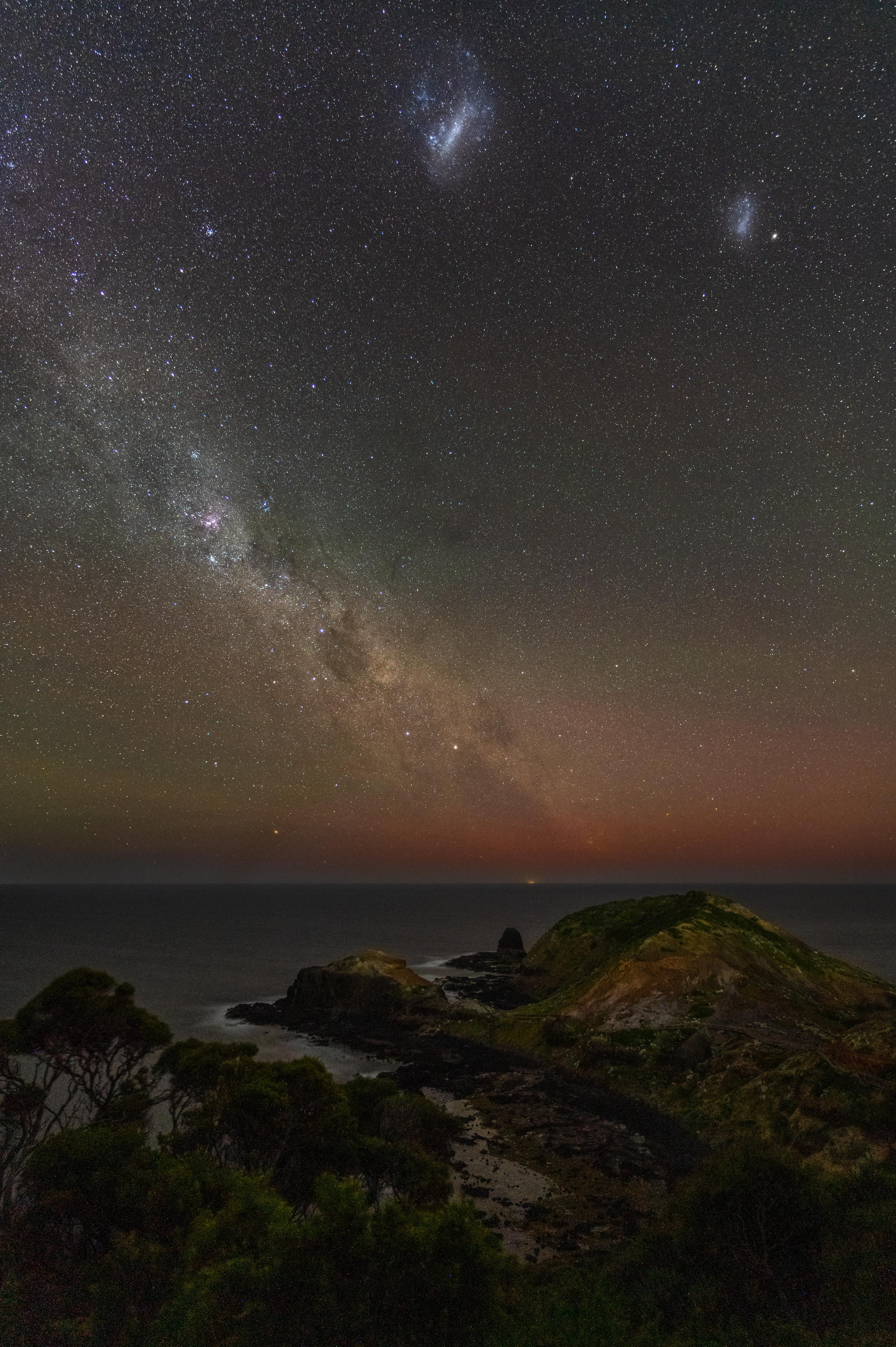Submitted by f4fotografy t3_zu35di in EarthPorn
Comments
f4fotografy OP t1_j1gtpra wrote
Just a little red and green for christmas (and the Coal Sack).
[Annotated version with POIs on my profile as this sub doesn't allow galleries]
90% of the world's population live in the Northern Hemisphere and cannot see the South Celestial Pole. Down here at -37 degrees lattitude the Magellanic Clouds and the Carina region of the Milky Way never set below the horizon so we have "Galaxy Season" all year 'round.
The layers of green are caused by "Airglow", from the atmospheric molecules which absorb UV radiation all day and glow faintly green as they cool down at night.
The red is from "Diffuse Aurora", caused by high energy charged particles of solar wind being deflected by the Earth's magnetic field towards the poles and slamming into the atmosphere so hard they glow red and green (and sometimes purple) like tiny atomic meteors.
The dark region called the Coal Sack is actually a clump of cold gas and stardust blocking out the light from the stars behind similar to the "Dark Doodad" which is made of the same stuff but has a much funnier name.
The Magellanic Clouds are "Dwarf Galaxies" orbiting outside the Milky Way, they're much smaller than Andromeda but much closer.
The 47 Tuc cluster is the second brightest star cluster and contains more stars within it than can be seen from earth with the naked eye (around 10,000).
The Omega Centauri cluster contains around 10,000,000 stars and looks like a bright fuzzy star to the naked eye.
Sony A7III Tamron 17-28 17mm f/2.8 ISO5000 10"
Chipotle42 t1_j1gutj2 wrote
r/SkyPorn, too
BrittishBubLLes t1_j1haj1v wrote
Absolutely stunning
36-3 t1_j1hcquu wrote
Thank you for posting. I'm jealous of you folks with the telescopes.
TraditionalPiccolo28 t1_j1hng1c wrote
The cosmos are smiling
[deleted] t1_j1hpalp wrote
[deleted]
Cyberfury t1_j1hpnm4 wrote
There is no way one doo-doos on the Dark Doodad like that and gets a away with it. ;;)
incrediblediy t1_j1hxwuk wrote
awesome mate! were you camping there ?
daovtoan t1_j1hy475 wrote
Heys Op can you see this with normal eyes ? Or is exposure the only ways
BurntLemonade t1_j1i3y06 wrote
Absolutely perfect for today. Happy Christmas!
dtra33 t1_j1jgm6z wrote
Amazing m, thanks for posting, going down that way today, didn’t realise the milky way was still visible this time of year. Might givenit a shot or two if I can wake up
f4fotografy OP t1_j1jjbqt wrote
not quite. You can see everything that's in the image, but your eyes won't pick up the details (everything is just a fuzzy blob), and your eyes won't pick up the colour.
From this location you can make out the dark nebulae like Coalsack and easily see the Magellanic Clouds, but this is a Bortle 3 sky (3rd best rating for darkness, "rural").
f4fotografy OP t1_j1jjjzr wrote
No it's all national park around there. That's the easiest place to get to for me when there's an aurora alert, it's around 2 hours drive and a short hike from my house.
f4fotografy OP t1_j1jjpum wrote
Some part of the milky way is visible all year round down here, and the Carina region is hugely underrepresented
stephenschreinert t1_j1jmy2c wrote
Beautiful
Awesome_andi t1_j1k69hv wrote
So pretty!!!

AutoModerator t1_j1gtkw7 wrote
Hi f4fotografy! Dont worry, this message does not mean that your post is removed. This is a reminder to quickly check your post to make sure it doesnt break any of our rules. Human moderators check the following --
some visible land, that is not silhouetted
no human-made objects (roads, boats, buildings) visible
no obvious people or animals visible
include location in post title
Thanks!
I am a bot, and this action was performed automatically. Please contact the moderators of this subreddit if you have any questions or concerns.